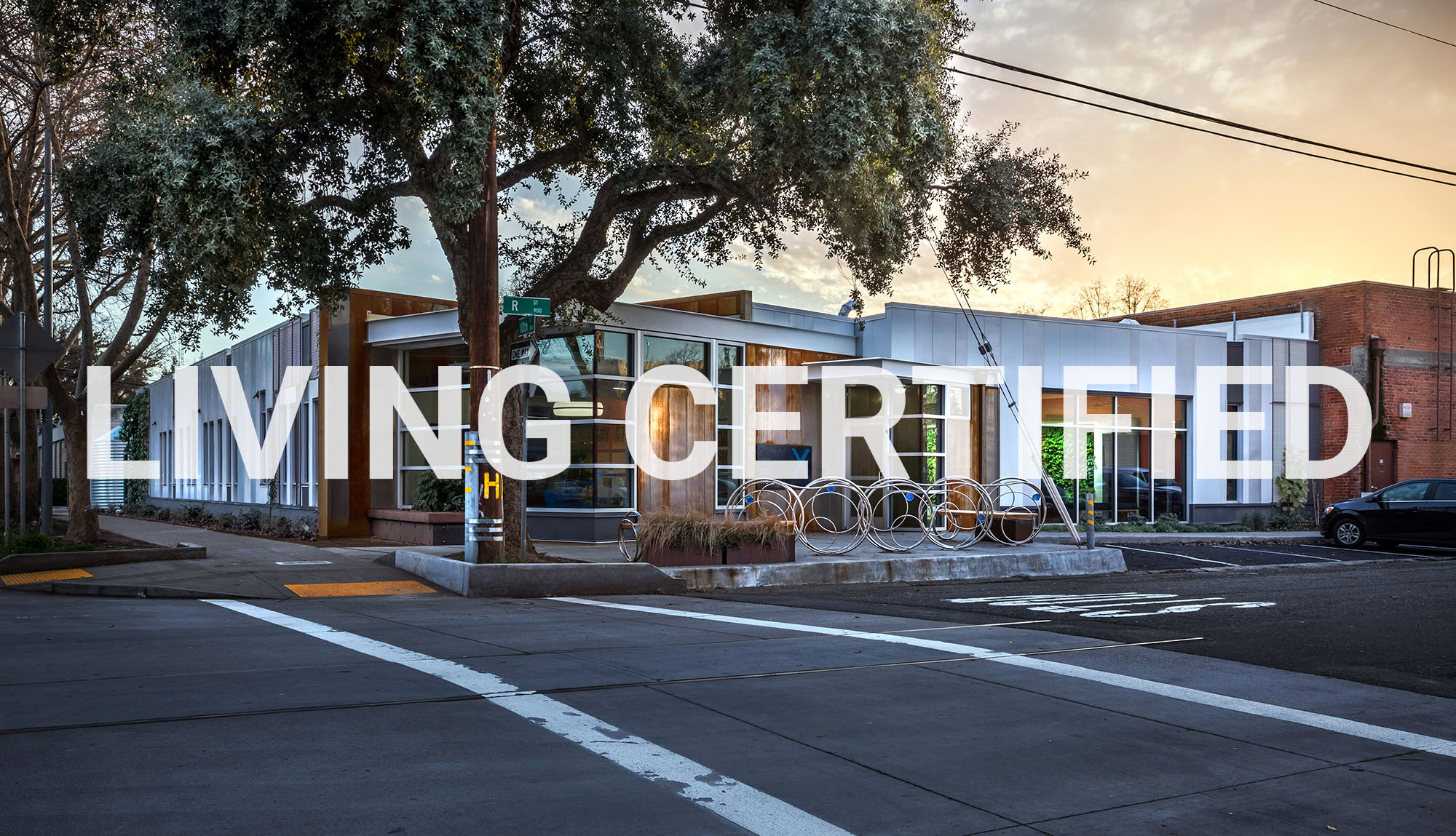Arch Nexus SAC , News: Arch Nexus SAC is Living Certified

In 2015, we set out to find a new space for our growing business in Sacramento. As we sought a location that would provide equitable amenities as compared to our Salt Lake City office, we decided to take the opportunity to do something bold. Our aim was to rehabilitate an existing building by turning it into something that closely aligned with our own core values of inspiration, stewardship, and regeneration. For this cause, we embraced the Living Building Challenge. This challenge has lead us on a journey of discovery that has spanned the past three years. Today, it is with great pleasure that we are able to announce that Arch | Nexus SAC is Living Certified!
This represents the 19th Living Certified project in the world by the International Living Future Institute (ILFI). Of those 19, Arch | Nexus SAC is the first Living Certified project in California and the first anywhere that is an adaptive re-use of an existing building. Regarding this accomplishment, Arch Nexus President Kenner Kingston stated, “This building is evidence of how the gap that has evolved between people and nature can be bridged through architecture, rather than divided by it.”
Along the road to certification we encountered many challenges. Some we had anticipated such as the heavy burden of documenting the makeup of the many materials found in the building. Given our experience with occupant engagement we were also aware of the potential challenges that existed in achieving net-positive energy in a high-performance office building dominated by plug loads. Perhaps the most daunting obstacle that the project team envisioned was the imperative to achieve net-positive water in a State dominated by recurring droughts.
There were also a few surprising challenges that we didn’t expect. We didn’t anticipate that an air test to measure particulate matter inside our naturally ventilated building would take place immediately after a series of devastating fires in the region (fueled by climate change). We also didn’t expect to form such a strong partnership with the local utility district; SMUD representatives were present at our very first design charrette and they have been a tremendously valuable partner in making this building a reality.
Through these, and many other experiences, we learned an incredible amount about how to design and operate buildings that are a part of the natural ecosystem. Buildings have, and continue to be, designed, built, and operated in ways that harm our environment. The past couple of decades have seen a gradual trend in design and construction that has moved our industry towards doing less harm, but the idea of making buildings that regenerate the environment and operate as thriving, living entities is something that remains very novel.
Being the first to do anything is not easy. It is our hope that by demonstrating how a Living Certified Building is designed, built, and operated regenerative architecture can move out of the novel and into the norm.